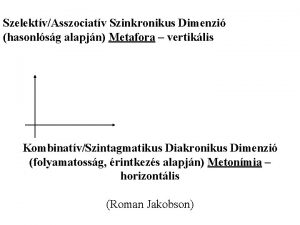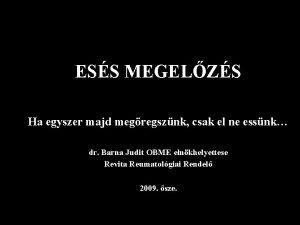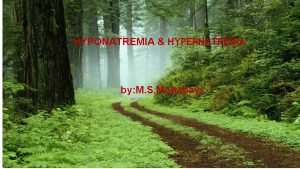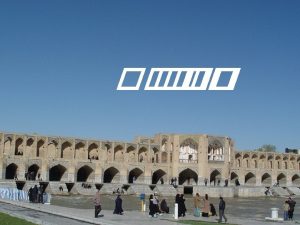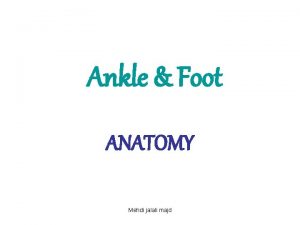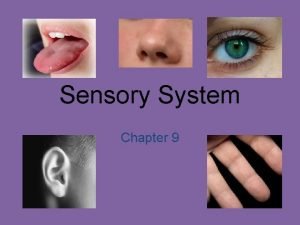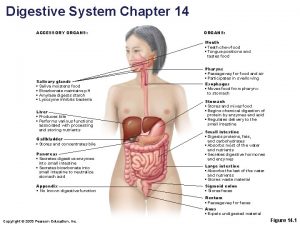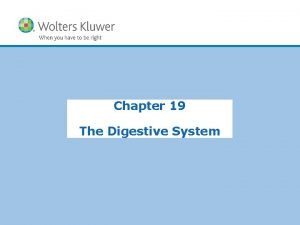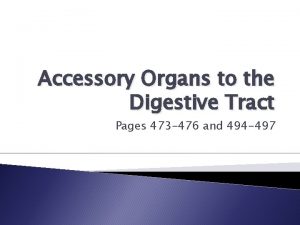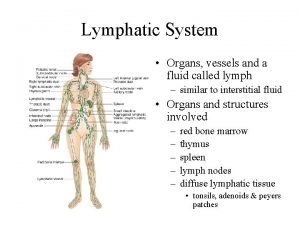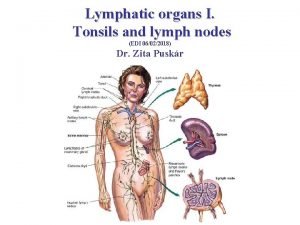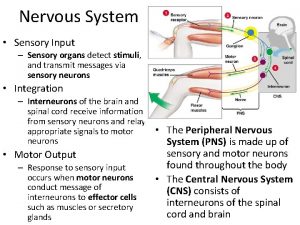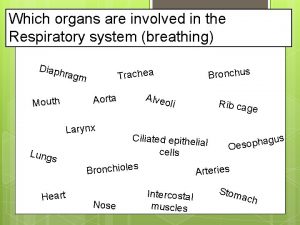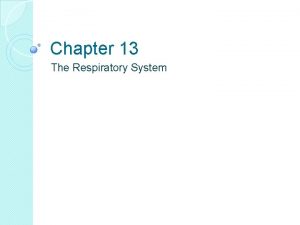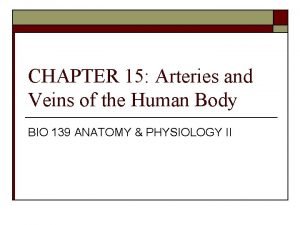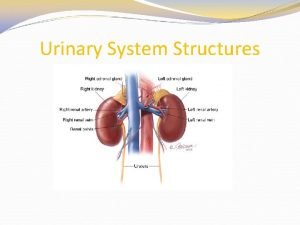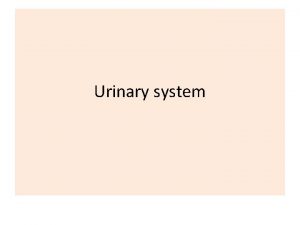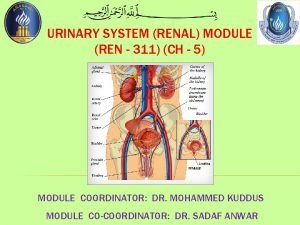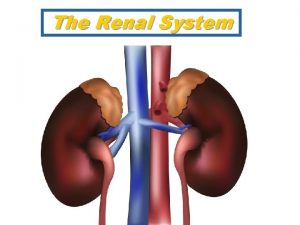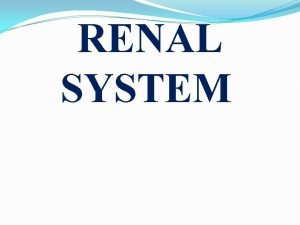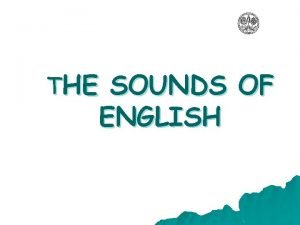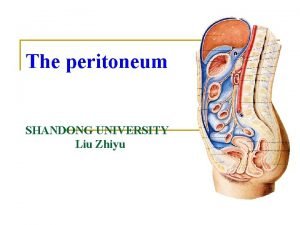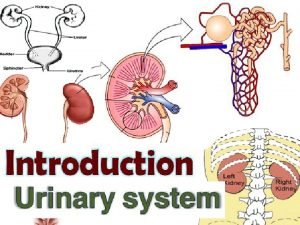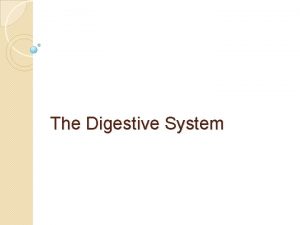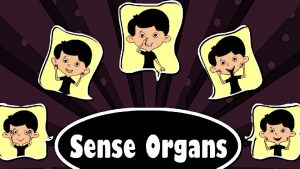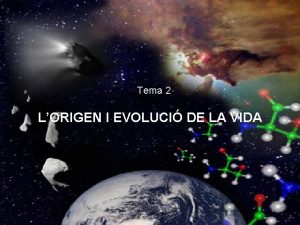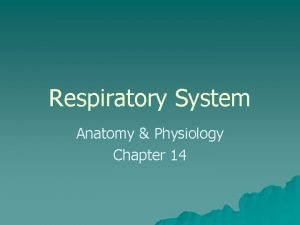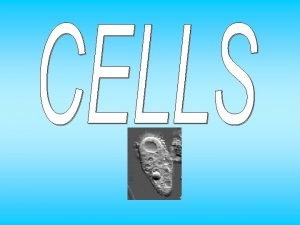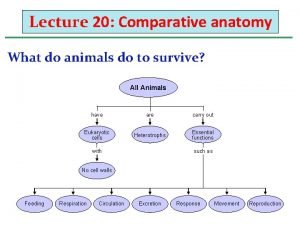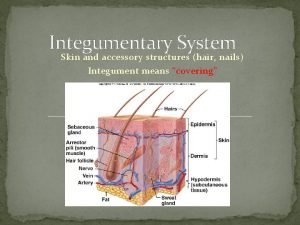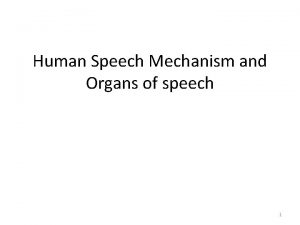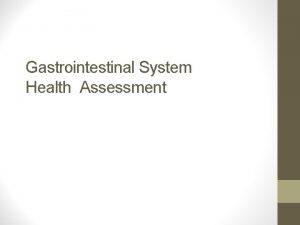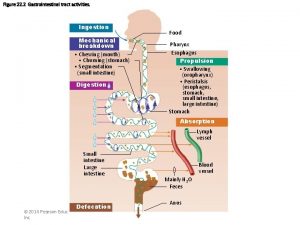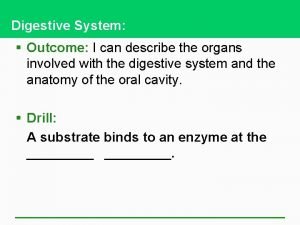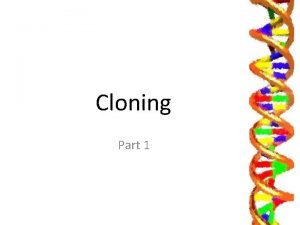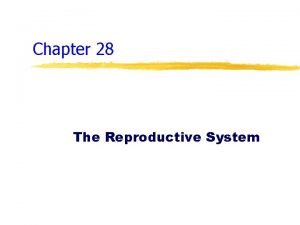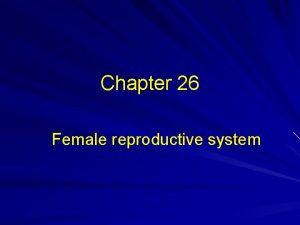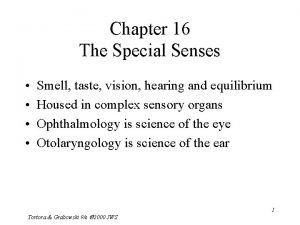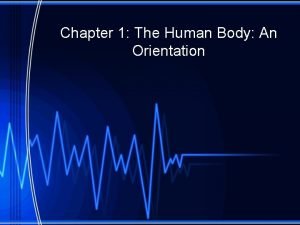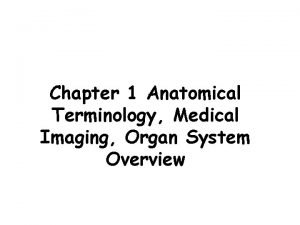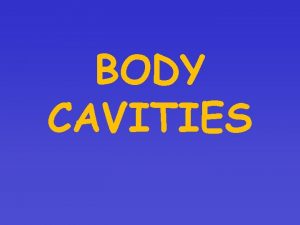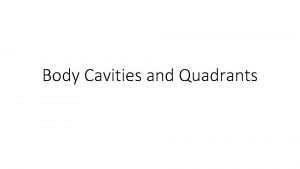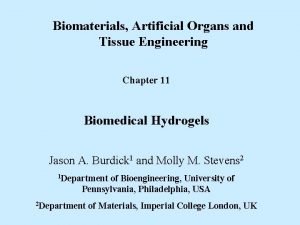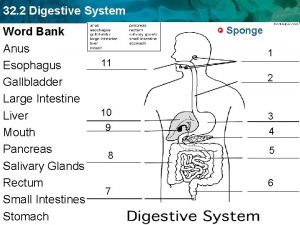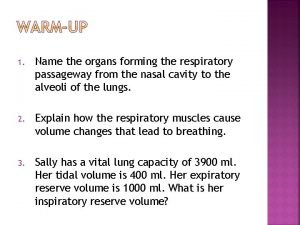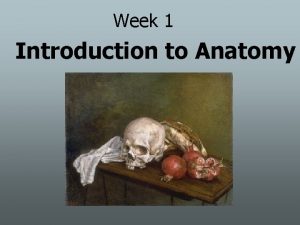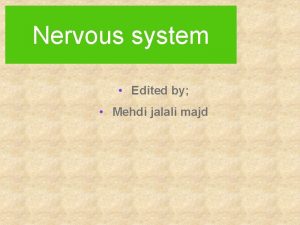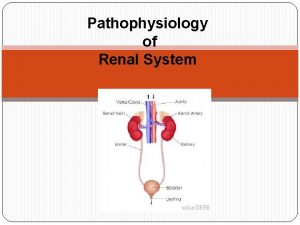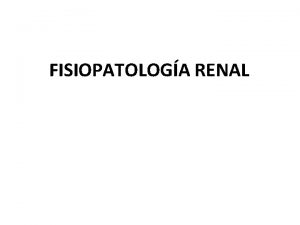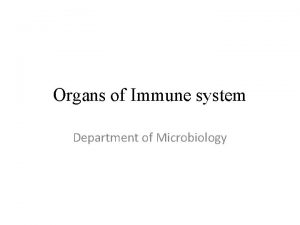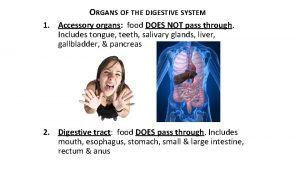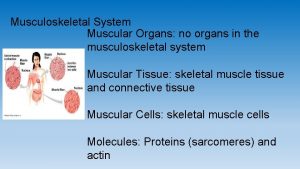RENAL SYSTEM mehdi jalali majd 1 Organs of




























































































- Slides: 92

RENAL SYSTEM mehdi jalali majd 1

Organs of the Renal System Kidneys Ureters Urinary bladder Urethra Not many structures, but very important! mehdi jalali majd Figure 23. 1 a 2

Functions of Urinary System Regulate electrolytes (K+, Na+, etc) Regulate p. H in blood Regulate blood pressure Regulate blood volume (removes excess fluid) Removing metabolic wastes n n Urea, uric acid, and creatinine This is the least important of the kidney’s functions. You can survive for a few weeks without excreting waste products in the urine, but hour by hour, the other functions are more important. mehdi jalali majd 3

Relationship of the Kidneys to Vertebra and Ribs They are retroperitoneal and are located in the abdominal cavity. They are at the level of T 12 to L 3, so they are at the costal margin, and the floating ribs protect them a little. Even though they are protected by thoracic ribs, they are NOT in the thoracic cavity because they are below the diaphragm. mehdi jalali majd Figure 23. 1 b 4

Position of the Kidneys with in the Posterior Abdominal Wall mehdi jalali majd Figure 23. 2 a 5

STRUCTURES WITHIN THE KIDNEY The RENAL CAPSULE surrounds the kidney, made of dense fibrous connective tissue. A layer of adipose tissue surrounds the capsule, called PARARENAL FAT (ADIPOSE). It cushions and protects. Around that is a connective tissue layer called the RENAL FASCIA, made of loose connective tissue. It anchors the kidney to the surrounding peritoneum and abdominal wall. It is not very strong; jumping up and down cause tearing. mehdi jalali majd 6

Vibration Platform Machine: No longer used in the USA because it damages kidneys! mehdi jalali majd 7

These are still around in gyms in other countries…beware! mehdi jalali majd 8

Gross Anatomy of the Kidneys n n Renal cortex (most superficial layer) Renal medulla Renal pyramids (drain into the calyx) n Renal pelvis Calyx (drains into hylus ureter) n Ureter mehdi jalali majd 9

Renal fascia Interlobar arteries Interlobular arteries Arcuate arteries mehdi jalali majd 10

Internal Anatomy of the Kidneys Interlobar artery mehdi jalali majd Figure 23. 3 b 11

Blood Supply to Kidney AORTA RENAL ARTERY SEGMENTAL ARTERIES INTERLOBAR ARTERIES ARCUATE ARTERIES (form arcs) INTERLOBULAR ARTERIES INTERLOBULAR VEIN ARCUATE VEIN INTERLOBAR VEINS SEGMENTAL VEINS RENAL VEIN INF. VENA CAVA mehdi jalali majd 12

Internal Anatomy of the Kidneys Interlobar artery mehdi jalali majd Figure 23. 3 b 13

Microscopic Anatomy of the Kidneys Just like the functional unit of the lungs is the alveolus and the functional unit of the liver is the lobule, the functional unit of the kidney is the NEPHRON. Each kidney has about 1 million nephrons. Each one carries out all of the various functions of the kidneys. mehdi jalali majd 14

Microscopic Anatomy of the Nephron GLOMERULUS WITH A CAPSULE PROXIMAL CONVOLUTED TUBULE LOOP OF HENLE n DESCENDING LIMB Thick portion Thin portion n ASCENDING LIMB Thick portion Thin portion DISTAL CONVOLUTED TUBULE COLLECTING DUCT mehdi jalali majd 15

Nephron mehdi jalali majd 16

Position of Nephron in Kidney mehdi jalali majd Figure 23. 4 a 17

Glomerulus of a Nephron mehdi jalali majd 18

Juxtaglomerular Apparatus Ø The distal convoluted tubule passes next to the glomerulus to form the juxtaglomerular apparatus (juxta means “next to”). Ø The juxtaglomerular apparatus (JGA) consists of cells located in and around the glomerulus and the glomerular capsule. 19 majd mehdi jalali

Juxtaglomerular Apparatus Ø If blood pressure is too low, the JGA releases adenosine, which causes vasoconstriction of the afferent arteriole. This will slow the filtration rate so less water is lost, and blood pressure increases. mehdi jalali majd 20

Juxtaglomerular Apparatus: Juxtaglomerular Cells Ø if the blood pressure is still too low after adenosine has caused vasoconstriction, the JGA secretes the hormone renin. Ø Renin causes more sodium to be reabsorbed, and water follows, so blood volume increases, so blood pressure increases. mehdi jalali majd 21

GLOMERULUS The glomerulus is the first part of the nephron, where the filtration occurs. That means plasma leaks out of the capillaries and into the convoluted tubules. The glomeruli are located only in the renal cortex. A glomerulus (“ball of yarn”) is a tuft of capillaries surrounded by a glomerular capsule (Bowman’s capsule) made of simple squamous epithelium. The capillaries fits in the capsule like a fist punched into an underinflated balloon. The capsule collects the plasma from the capillaries and drains it into the convoluted tubules, which empty into a collecting duct, which exits the body. The plasma is further filtered along the way. The good nutrients are reabsorbed back into the blood. mehdi jalali majd 22

Glomerulus of a Nephron mehdi jalali majd 23

Normally at the end of the capillary bed you have venuoles. But this is the only part of the body that is different: here we have another arteriole, called the EFFERENT ARTERIOLE, which takes blood away from the glomerulus. The efferent arteriole drops down straight, next to the Loop of Henle. While it is straight, it is called VASA RECTA (straight capillaries). There are capillaries that come off the vasa recta which surround the loop of Henle. Here, they are called peritubular capillaries. They then leave the area to become the interlobular vein, which leaves the kidney. mehdi jalali majd 24

Nephron mehdi jalali majd 25

Distal convoluted tubule Efferent arteriole Afferent arteriole Bowman’s capsule Proximal convoluted tubule mehdi jalali majd 26

FUNCTION OF THE NEPHRON Blood comes in from the AFFERENT ARTERIOLES. Plasma leaks out and enters the glomerular capsule. The plasma contains nutrients, which need to be reabsorbed, as well as waste products. As the plasma moves through the proximal convoluted tubule, all of the nutrients, and most of the water, and most of the ions are reabsorbed back out of the nephrons and into the blood. In the Loop of Henle, almost all of the rest of the water and salt are reabsorbed into blood. Everything that is not reabsorbed (waste products) goes into the collecting duct and is excreted as urine. This is also how the water-salt balance is maintained, as well as the acid-base balance. The kidneys canmehdi remove or retain acids as well. 27 jalali majd

Nephron mehdi jalali majd 28

FUNCTION OF THE NEPHRON In the distal convoluted tubule, the rest of the water and salt are removed. The rest of the liquid goes into the collecting duct. The distal convoluted tubule and the collecting duct fine-tune the water and salt absorption and excretion. If you are well hydrated, the water will be allowed to leave as urine. If you are thirsty, the water will be absorbed. The purpose of the peritubular capillary bed is to absorb these things from the nephron tubules and put them back into the blood. mehdi jalali majd 29

mehdi jalali majd Figure 23. 5 30

Renal Corpuscle and the Filtration Membrane mehdi jalali majd Figure 23. 6 c 31

Function of the Nephron NEPHRON VIDEO http: //www. youtube. com/watch? v=a. QZa. NXNro. VY 6 Tips for healthy urinary system: http: //urology. about. com/od/infections/tp/5 tipsforurinehealth. htm Lupus Nephritis mehdi jalali majd 32

Diuretics are medicines that increase the amount of urine that is produced. People who have high blood pressure might be prescribed diuretics to decrease the blood volume. Alcohol is a diuretic and this is what contributes to the symptoms of a hangover. The best way to prevent a hangover after drinking is to consume a lot of water before you go to bed. Caffeine is also a diuretic, so coffee, energy drinks, and regular Coca-cola are diuretics. You should drink one cup of water for every cup of those beverages to prevent mehdi jalali majd 33 dehydration.

HISTOLOGY OF THE NEPHRON PROXIMAL CONVOLUTED TUBULES n This area absorbs all nutrients and 2/3 of the water and salt. Only about 1% of the fluid filtered by the kidney actually becomes urine. LOOP OF HENLE n This is where 1/3 of water and salt is reabsorbed. It is located in the renal medulla. mehdi jalali majd 34

Urine Production Filtration – filtrate of blood leaves kidney capillaries Reabsorption –nutrients, water, and essential ions reclaimed Secretion – active process of removing undesirable molecules mehdi jalali majd 35

mehdi jalali majd Figure 23. 9 a 36

Collecting Duct (tubule) Receives urine from distal convoluted tubules, empties into the calyx, which empties into the ureter. mehdi jalali majd 37

Ureters These are long tubes that connect the renal pelvis to the urinary bladder MUCOSA n n TRANSITIONAL EPITHELIUM (for expansion) LAMINA PROPRIA (has elastic tissue to recoil) MUSCULAR LAYER (smooth muscle) n n INNER CIRCULAR OUTER LONGITUDINAL ADVENTITIA n n Loose connective tissue Provides protection, strength for organs, and attaches ureters to surrounding structures mehdi jalali majd 38

URINARY BLADDER The histology of the urinary bladder is identical to the ureter except the mucosal layer has folds called RUGAE, which allow for expansion. The rugae have the same basic function as transitional epithelium— accommodating stretch as the bladder fills. You can hold up to one liter of urine, although at 500 ml, you’ll be dancing. mehdi jalali majd 39

Urinary Bladder Rugae: allows for expansion -A full bladder is roughly the size of a soft ball mehdi jalali majd Figure 23. 14 40

URINARY BLADDER The muscle layer that makes up the urinary bladder is thicker than the ureters, and is called the DETRUSOR MUSCLE, which contracts to allow emptying of the urinary bladder. The function of the urinary bladder is just to store urine. mehdi jalali majd 41

Detrusor Muscle mehdi jalali majd 42

URETER entrance to BLADDER The URETERS enter in at the base of the urinary bladder, not the top. As the bladder fills, the urine presses down on the ureters to prevent urine from backing up into the kidneys. Da Vinci surgery http: //www. davincisurgery. com/da-vinciurology/da_vinci_partial_nephrectomy. php mehdi jalali majd 43

BLADDER The TRIGONE is a triangular area where the ureters come in and the urethra goes out. Between the urethra and the urinary bladder are two sphincters: INTERNAL URETHRAL SPHINCTER: smooth muscle EXTERNAL URETHRAL SPHINCTER: skeletal muscle. Although it is primarily under voluntary control, it will release if the urine volume is too much. If the patient is in a coma or under anesthesia for a long time, the internal sphincter will be closed, like when you are asleep, so a catheter is needed to open it to drain the urine out. mehdi jalali majd 44

mehdi jalali majd 45

Bladder Stones mehdi jalali majd 46

Pelvic Ultrasound Attachment mehdi jalali majd 47

Urethra Drains the urine to the outside. Its histology is the same as the ureter Females: 4 cm Males 20 cm (varies with mood) Therefore, women (esp. little girls) are more susceptible to UTI. mehdi jalali majd 48

Problems URETHRITIS = infection and inflammation of the urethra PYELITIS= infection of the renal calyxes CYSTITIS = infection of the urinary bladder. CHOLEOCYTITIS = infection of the gall bladder mehdi jalali majd 49

UREA Urea is a waste product of amino acid metabolism. Remember, proteins are made of amino acids, so when you break down proteins, you break them down into amino acids, and the waste product left over is urea. This is the main waste product in urine. Eating excessive proteins can cause kidney damage, since their breakdown products are acidic. mehdi jalali majd 50

COLOR OF URINE When you urinate, it should be clear and colorless with almost no yellow color. The more yellow the urine is, the more dehydrated you are. If the urine is very dark yellow, you are burning too much protein (as in food deprivation). This is often seen in diabetes. If your urine is so bright yellow it almost glows, are you taking creatine for body building? It makes you look like you are getting more bulky, but it is just water weight. When you stop taking it, you go back to normal. In the meantime, what is it doing to your kidneys? mehdi jalali majd 51

Serious Side Effects of High Doses of creatine The FDA report includes a case in which creatine supplementation was linked to an athlete who died of renal disease. The report also describes another patient with renal disease, who was taking creatine but saw health problems recede after no longer taking creatine. The report notes, however, that extensive research on the effects of creatine on renal function has shown no adverse reactions. Common Side Effects of High Doses The more common side effects that can occur with creatine use are also related to higher doses. According to Dr. Ray Sahelian, nausea, loose stools, cramping, upset stomach, weight gain, diarrhea and weakness usually occur when more than 5 grams of creatine are used per day. The University of Maryland Medical Center notes that side effects of creatine can also include dizziness, high blood pressure, liver dysfunction and kidney damage. Most research has found that creatine causes no major side effects when used for as long as six months at a time. Recommended Doses To avoid the potential serious and more common side effects associated with creatine use, be sure to stay within the recommended daily dosage. A maximum of 5 grams of creatine per day should be used, although the University of Maryland Medical Center notes that a "loading phase, " in which four doses of 5 grams per day (totaling 20 grams) can be used for two to five days. If you choose this method, a subsequent "maintenance" dose of 2 grams per day should follow. Creatine supplements should not be used by children or teens or those with kidney problems. Before starting creatine, be sure to see your doctor determine if you are healthy enough to use mehditojalali majd 52 creatine.

Problems KIDNEY STONES n n n Develop in the renal pelvis Stones are made out of a variety of things: uric acid, calcium, cystine (an amino acid), or cholesterol. They keep growing. mehdi jalali majd 53

KIDNEY STONES They can block the ureter, causing the kidney to enlarge. As the kidney stretches, the capsule stretches, causing excruciating pain in cycles of hours. As pressure builds up from fluid accumulating around the stone, urine can pass, and the kidney stone moves down the urethra slowly. Symptomatic kidney stones may be pea sized or larger (up to 1 ½ inches). They get stuck in three places: n n n Renal pelvis In the ureter as it bends over the common iliac artery In the urinary bladder at the trigone. mehdi jalali majd 54

Where kidney stones get stuck Renal pelvis Ureter Common iliac artery Urinary bladder trigone mehdi jalali majd 55

Kidney Stones mehdi jalali majd 56

5 cm Kidney Stone Surgery mehdi jalali majd 57

mehdi jalali majd 58

KIDNEY STONES TREATMENT ULTRASOUND LITHOTRIPSY n Put a powerful speaker on the outside of the kidney, sends a shock wave which the tissues absorb, but the stones shatter so the pieces can pass easier. STENT n (1 ½ foot long tube) in to keep the ureter open along its entire length. Insert under general anesthetic, remove without. To help prevent kidney stones, drink enough fluid so your urine stays clear and light colored. mehdi jalali majd 59

ULTRASOUND LITHOTRIPSY mehdi jalali majd 60

mehdi jalali majd 61

Kidney Stone Prevention mehdi jalali majd 62

Reynolds. Unwrapped. com offers FANTASTIC, inexpensive daily email subscriptions, where you can receive a HILARIOUS new cartoon every day, and it is a MARVELOUS idea for a UNIQUE gift for your family and friends as well. That is how I learned about this. . . one of my fellow teachers gave me a subscription as a birthday present. He also has FUNNY greeting cards and BEAUTIFUL paintings for sale as well. You can also get reprints suitable for framing, or originals. Here is more info about his work and a YOUTUBE video. https: //nccnews. expressions. syr. edu/? p=11515 mehdi jalali majd 63

Kidney Mass video mehdi jalali majd 64

Other Kidney Problems Nephritis: inflammation of the nephrons. Hydronephritis: excess fluid in the nephron. Glucose in the urine: indicates diabetes. mehdi jalali majd 65

Kidney Failure Things can happen to the kidney that can lead to kidney failure: infection, excess proteins, p. H change, and blood pressure drops. Treatment for kidney failure is DIALYSIS, which removes blood, send it through a filter, and returns it without the wastes. It is done three times a week, six hours a day. Ideally, they need a kidney transplant because the kidney has other functions as well. The brain, heart, and kidney are the only three organs in the body that have to get oxygen to sustain life. mehdi jalali majd 66

Causes of Renal Failure 1. Medication / Poison / Infection People with long term health problems are most at risk to have kidney problems from medication. - Antibiotics - Pain Medication - Blood Pressure Medicine - Dyes used in X-rays mehdi jalali majd 67

2. Sudden drop in blood flow. - Heavy blood loss from an injury - A serious infection (Sepsis) - Severe Dehydration 3. Blockage of fluid out of the Kidney - Kidney Stones - Tumor(s) - Enlarged Prostate Gland mehdi jalali majd 68

Who is most likely to get Renal Failure? Kidney or Liver Disease Diabetes High Blood Pressure Heart Failure Obesity Bone Marrow Transplant Heart or Belly Surgery mehdi jalali majd 69

Symptoms Very little or no urine during urination If the body is unable to excrete potassium, the rising of potassium levels is associated with ventricular tachycardia and ventricular fibrillation. Lethal injections are excess potassium. Loss of appetite As waste accumulates, lethargy and fatigue become apparent to the point where mental function can decrease to coma. Body Weakness Because of low levels of erythropoietin produced by failing kidneys they do not stimulate the bone marrow which leads to a decrease in red blood cells. This leads to less oxygen throughout the body which leaves the body unable to do work. mehdi jalali majd 70

Symptoms High Blood Pressure Because the kidneys can not deal with the rising acid levels in the body, breathing becomes more rapid as the lungs attempt to blow off carbon dioxide to buffer the acid levels. In doing so, fluid can be deposited in the lungs possibly causing congestive heart failure. Swelling of the legs and feet Nausea and or Vomiting Back pain below the rib cage, (Flank Pain) Some people may not have any symptoms (asymptomatic) mehdi jalali majd 71

Diagnosis Patients can be diagnosed by undergoing blood and urine tests Blood Urine BUN -Blood Urea Nitrogen Creatinine -Waste product levels GFR -Glomerular Filtration Rate Protein Abnormal presence of White and Red blood cells Electrolytes mehdi jalali majd 72

Diagnosis Patients can also undergo an Ultrasound to see if there any obstructions. mehdi jalali majd 73

Treatments are based on the cause Issue - Blood Loss Treatment - Restore blood flow - Medication / Poison - Stop taking the medication or poison - Blockage - Remove or bypass blockage mehdi jalali majd 74

Also, the person treating the patient will attempt to stop the buildup of waste in the body. This may be done by dialysis. And the person treating the patient may also administer other medication to prevent the retention of excess fluid and minerals and prevent any further renal damage. -lowering Phophorus levels -increase production of Red Blood Cells -regulate blood pressure with medication mehdi jalali majd 75

Prevention Regulate Blood Pressure Regulate Sugar Intake Regulate Protein Intake Stay hydrated Once the kidney fails the only options are dialysis and transplantation. mehdi jalali majd 76

Values APPEARANCE BACTERIA BILIRUBIN COLOR EPITHELIAL CELLS ERYTHROCYTES GLUCOSE HEMOGLOBIN HYALINE CASTS KETONES LEUKOCYTE ESTERASE LEUKOCYTES NITRITE PH PROTEIN SPECIFIC GRAVITY UROBILINOGEN HPF = high power field LPF = low power field Results CLEAR MODERATE NEGATIVE AMBER FEW 3 -5/HPF (High) NEGATIVE 0 -4/LPF 1+ 1+ 6 -10/HPF (High) NEGATIVE 6. 5 TRACE 1. 029 0. 2 mehdi jalali majd Normal CLEAR NEG Straw FEW 0 -2 NEG 0 -4 NEG 0 -2 NEG 4. 5 -8. 5 NEG 1. 003 -1. 035 <1. 0 77

Urinalysis: What Does It All Mean? How to perform test • Midstream catch is acceptable • Should be examined within 2 hours • Should be refrigerated if not read immediately mehdi jalali majd 78

Specific Gravity • Purpose: urine osmolality and represnts patients’ hydration status and concentrating ability of their kidneys • Normal: 1. 003 -1. 030 • Increased USG: glycosuria, SIADH • Decreased USG: diuretic use, DI, adrenal insufficiency, aldosteronism, impaired renal fx mehdi jalali majd 79

p. H • Purpose: urinary p. H reflects serum p. H except in renal tubular acidosis (RTA), useful for diagnosis/management of UTIs and calculi • Normal: 4. 5 -8. 0, slightly acidic usually (5. 5 -6. 5) • Alkaline urine: suggest urea-splitting organism • Acidic urine: uric acid calculi mehdi jalali majd 80

Hematuria • Criteria: 3 or more RBC per HPF in 2 of 3 urine samples • Testing: for peroxidase activity, will be positive in hematuria, myoglobinuria, hemoglobinuria • -if positive: must look at micro to confirm presence of RBCs • Types: glomerular, renal, urologic mehdi jalali majd 81

Proteinuria Criteria: >150 mg/day (10 -20 mg per d. L) -microalbuminuria= 30 -150 mg/day (sign of early renal disease) Normal urinary proteins: albumin, serum globulins, proteins secreted by the nephron -Dipstick results: 1+ = 30 mg/d. L 2+ = 100 mg/d. L 3+ = 300 mg/d. L 4+ = 1, 000 mg/d. L Types: transient and persistent -Transient: temporary change, benign, self-limited (ex: orthostatic proteinuria that results from prolonged standing, but negative U/A after recumbency). -Positive test: Repeat U/A -Persistent has 3 types: glomerular, tubular, overflow -Glomerular: albumin primary urinary protein -Tubular: malfunctioning tubule cells - Overflow: Low MW Proteins overwhelm ability of tubules to reabsorb -Positive test: Perform 24 -hour urinary protein excretion or spot urinary protein-creatinine ratio mehdi jalali majd 82

Glucosuria • Normal: almost completely reabsorbed in proximal tubule • Criteria: occurs at approximately 180 -200 mg/d. L • Elevated: DM, Cushing’s syndrome, liver and pancreatic disease, Fanconi’s syndrome mehdi jalali majd 83

Ketonuria • Normal: not present in urine • Testing: presence of acetic acid through a chemical reaction • Causes: uncontrolled diabetes, pregnancy, carbohydrate-free diets, starvation mehdi jalali majd 84

Nitrites • Normal: Not present in urine • Testing: bacteria that reduce urinary nitrates to nitrites • -Positive test: can be gram negatives or gram positive organism (neg > pos) • (>10, 000/m. L)Indicates significant number Negative test: Can’t R/O UTI because nonnitrate reducing organism can cause it mehdi jalali majd 85

UTIs • -NOTE: nitrite stick sensitive to air exposure: after one week of exposure about 1/3 of strips give false positive mehdi jalali majd 86

Leukocyte Esterase • Testing: presence of neutrophils • Sterile Pyuria: • -Organisms: Chlamydia and Ureaplasma urealyticum • -Other causes: balantis (inflammed head of penis), urethritis, TB, bladder tumors, viral infx, nephrolithiasis (kidney stones), foreign body, exercise, glomerulonephritis, corticosteroid use mehdi jalali majd 87

Bilirubin • Normal Bilirubin: no detectable amounts • -Unconjugated bili: not water soluble, doesn’t pass through glomerulus • -Conjugated bili: water soluble, indicates possible liver dysfunction or biliary obstruction mehdi jalali majd 88

Urobilinogen • Normal Urobilinogen: only small amounts • -Urobilinogen: end product of conjugated bili after metabolized by intestine, small amount reabsorbed into portal circulation and filtered by glomerulus • Increased urobilinogen: hemolysis, haptocellular disease • Decreased urobilinogen: antibiotic use, bile duct obstruction mehdi jalali majd 89

mehdi jalali majd 90

Fun Facts • Cat urine, semen, and blood will glow under fluorescent light. • So do most other bodily fluids. • . . . anything with phosphorus in it will glow under a black light. mehdi jalali majd 91

FUN URINARY TRACT DISCUSSION QUESTIONS Can you drink your own urine? n Although urine is pretty clean, the exit tube (urethra) is not, so as it comes out, it gets contaminated like a garden hose with mud on the tip. Is it more sanitary to be spit on or peed on? If you are stranded on a desert island, should you drink seawater or your own urine? Why do I have to go to the bathroom immediately after a cup of coffee? Why do you have to pee when you hear water dripping? Does cranberry juice cure urinary tract infections? n Yes, by deforming the disease-causing bacteria mehdi jalali majd 92
 Ira pré renal renal e pós renal
Ira pré renal renal e pós renal Diagnostico etiologico
Diagnostico etiologico Leila jalali
Leila jalali Majd alwan
Majd alwan Metoníma
Metoníma Ha egyszer majd megöregszünk
Ha egyszer majd megöregszünk Distinguish between renal corpuscle and renal tubule
Distinguish between renal corpuscle and renal tubule Abdollah arefkia
Abdollah arefkia Mehdi nt
Mehdi nt Azure technical trainer
Azure technical trainer Mehdi bouguerra
Mehdi bouguerra Base deficit
Base deficit Mehdi bouguerra
Mehdi bouguerra Hyponatremia correction formula pdf
Hyponatremia correction formula pdf Amir salek md
Amir salek md Dr. mehdi pain management
Dr. mehdi pain management Mehdi
Mehdi Mehdi khalighi
Mehdi khalighi Mehdi hamadani
Mehdi hamadani Mehdi namazi
Mehdi namazi R tree java
R tree java Mehdi salek md
Mehdi salek md Sensory system organs
Sensory system organs What is the main function of the excretory system
What is the main function of the excretory system Figure 14-1 digestive system
Figure 14-1 digestive system Accessory organs of the digestive system
Accessory organs of the digestive system Major and accessory organs of the digestive system
Major and accessory organs of the digestive system Lymphatic system and urinary system
Lymphatic system and urinary system Formation of lymph
Formation of lymph Reticular cell
Reticular cell Largest lymphoid organ
Largest lymphoid organ Organs of the sensory system
Organs of the sensory system Which organs are involved in respiratory system
Which organs are involved in respiratory system Chapter 13 the respiratory system
Chapter 13 the respiratory system Endocrine system organs
Endocrine system organs Renal portal system
Renal portal system Renal portal system
Renal portal system Diagram of the renal system
Diagram of the renal system Parietal layer of bowman's capsule
Parietal layer of bowman's capsule Renal system
Renal system Urinary system anatomy
Urinary system anatomy Renal system
Renal system Organs of wto
Organs of wto Analogous homologous and vestigial structures
Analogous homologous and vestigial structures The organs of articulation
The organs of articulation Primary and secondary retroperitoneal organs
Primary and secondary retroperitoneal organs Suprahepatic recess
Suprahepatic recess Hepatorenal recess
Hepatorenal recess Epiploic foramen
Epiploic foramen Adh function
Adh function Bee organs
Bee organs Main excretory organs
Main excretory organs What moves the food in the digestive organs
What moves the food in the digestive organs Sense organs
Sense organs Organs homolegs
Organs homolegs Description of the larynx
Description of the larynx Major plant organs
Major plant organs Origin of phonetics
Origin of phonetics Articulatory organs
Articulatory organs A.k.a. little organs
A.k.a. little organs In some plants like grass monstera and banyan tree
In some plants like grass monstera and banyan tree Tonsil
Tonsil Respiratory organs of invertebrates
Respiratory organs of invertebrates Respiratory organs of invertebrates
Respiratory organs of invertebrates Nails integumentary system
Nails integumentary system Bursa equivalent organs
Bursa equivalent organs Articulatory organs
Articulatory organs Images of sense organs with names
Images of sense organs with names Normal bowel sound
Normal bowel sound Frog dissection lab worksheet middle school
Frog dissection lab worksheet middle school Accessory digestive organs
Accessory digestive organs Excreatory organ
Excreatory organ Vestigial organs
Vestigial organs Name the three organs of the government
Name the three organs of the government Directional terminology
Directional terminology Accessory digestive organs
Accessory digestive organs Laryngopharynx
Laryngopharynx Oesophagus
Oesophagus Little nicky (cat)
Little nicky (cat) Mucous membrane reproductive system
Mucous membrane reproductive system Plant organs
Plant organs Sagittal female reproductive system
Sagittal female reproductive system Yanylion
Yanylion Abdominopelvic organs
Abdominopelvic organs Medical imaging
Medical imaging Left lower quadrant organs female
Left lower quadrant organs female Body quadrants
Body quadrants Biomaterials artificial organs and tissue engineering
Biomaterials artificial organs and tissue engineering Valve github
Valve github Primary and secondary retroperitoneal organs
Primary and secondary retroperitoneal organs There are nine organs given in the word bank
There are nine organs given in the word bank Organs forming the respiratory passageway
Organs forming the respiratory passageway Neck anatomical term
Neck anatomical term




